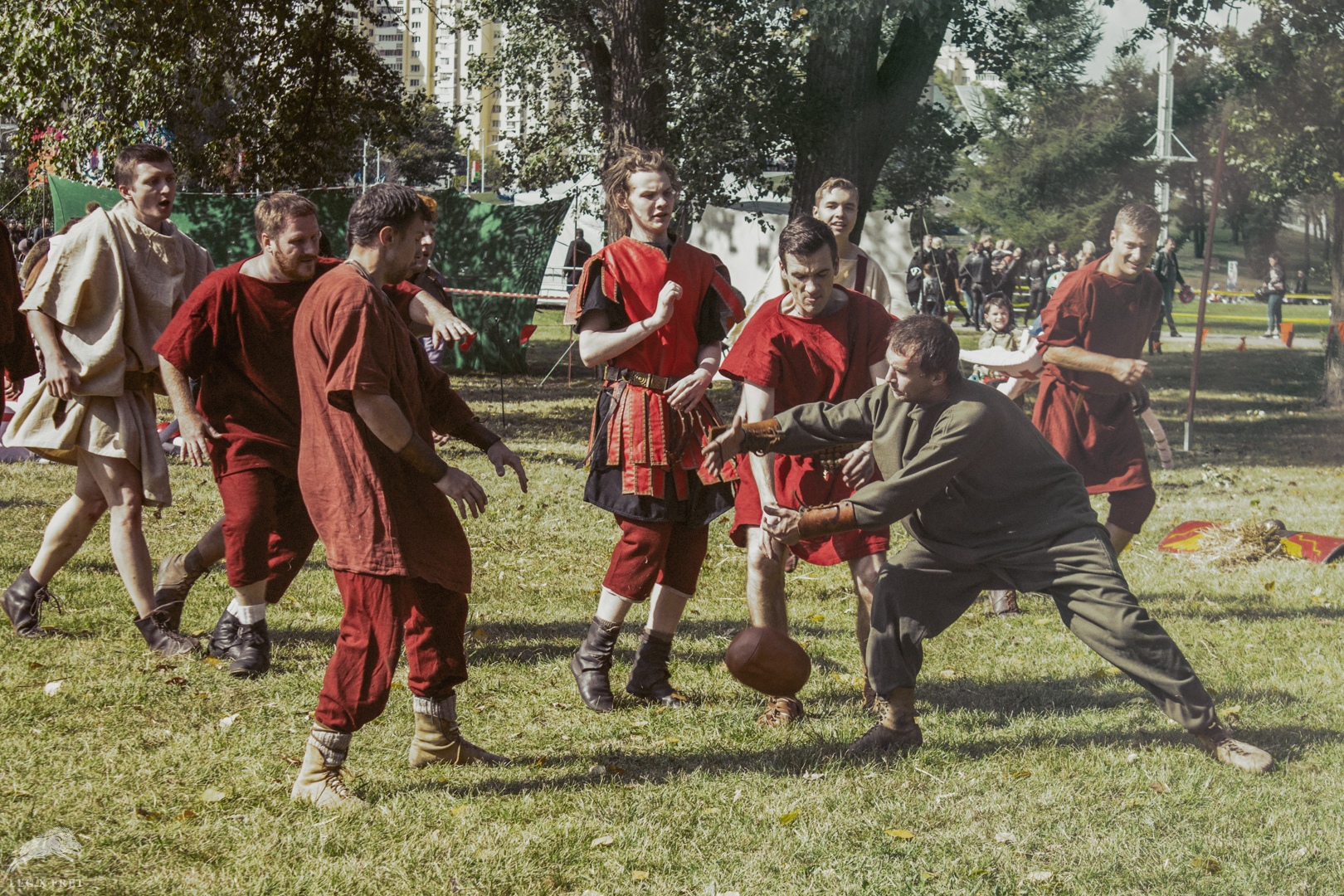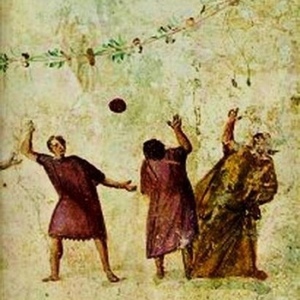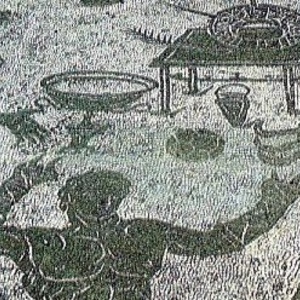Harpastum
Harpastum (from Latin harpastum, meaning "handball") is an ancient Roman team ball game.
It originated from the Greek game of episkyros, which the Romans adopted, slightly modified the rules, and renamed "harpastum" or "small ball game."
Harpastum remained popular for 700 years and even became a form of military training for legionnaires. Julius Caesar, who is believed to have played the game himself, introduced harpastum to maintain the physical fitness of his soldiers.
The game was played with a small but heavy ball, similar to a follis or paganica (a ball stuffed with feathers). Matches took place on a rectangular field with marked boundaries divided by a central line. The players had to pass the ball between two goalposts. Each side typically had 5 to 12 participants.
Harpastum vaguely resembled football or rugby and was characterized by its brutality. "The players are divided into two teams. The ball is placed on the line in the center of the field. Behind the players, who stand in their designated places, additional lines are drawn. The objective is to carry the ball behind these lines, but the feat can only be accomplished by shoving aside the players of the opposing team," describes a contemporary of Ancient Rome. Feet were hardly used in the game. An important rule of harpastum stated that only the player with the ball was allowed to be blocked. This limitation led to the development of complex passing combinations, tactical schemes, and clever tricks, while players were distributed across the field according to specific roles.
One of the most interesting pictorial sources on harpastum is a Roman mosaic from Ostia. It depicts the ball itself and players wearing red tunics, without armor, with one of the players clearly unfastened. However, there is a theory that the mosaic portrays physical education activities in a roman gymnasium.
Many ancient Greek writers note that the Roman harpastum was borrowed from the Greeks, who also had a ball game called episkyros (ἐπίσκυρος - "common ball"). A marble relief from the National Archaeological Museum in Athens tells the story of football. It depicts a Greek athlete juggling a ball on his thigh and showcasing his skill to the youth.
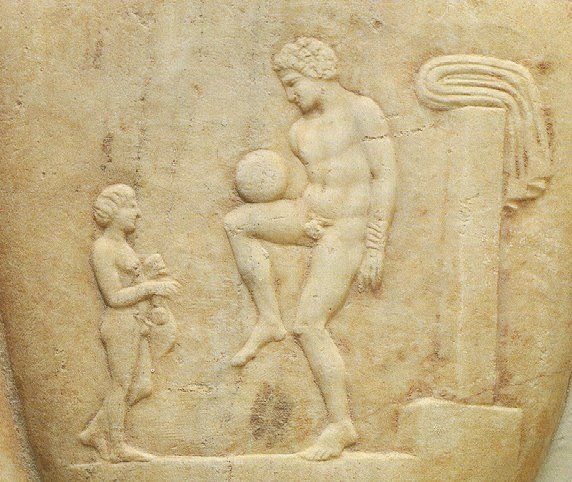 Game of the Spartans in Episkyros, 5th century BC, Athens State Museum of Archaeology
Game of the Spartans in Episkyros, 5th century BC, Athens State Museum of Archaeology
There are mentions that Roman boys played ball in the streets. Cicero describes a court case in which a man was killed because a ball hit him in the groin. This is likely the first historically documented case of someone dying during a football game.
Atheneaus wrote about harpastum: "Harpastum, also called phaininda, is my favorite game. Great efforts and fatigue accompany the game with the ball, with brutal twisting and breaking of necks." Antiphon also had words: "Curse it, how it hurts the neck." He described the game as follows: "He [the player] grabs the ball, passes it to his teammate while evading another, and laughs. He tosses it to someone else. He lifts his teammate to his feet. All this time, the crowd outside the field shouts. Far away, right behind him, above his head, on the ground, in the air, too close, a pass into a cluster of players."
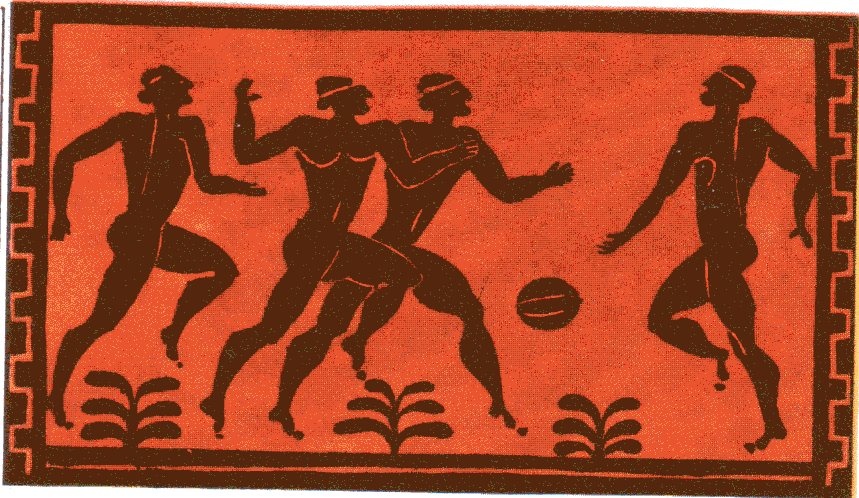 The Episkyros game. Ancient Greek Image, Athens State Museum of Archaeology
The Episkyros game. Ancient Greek Image, Athens State Museum of Archaeology
It is also believed that the Romans brought harpastum to the British Isles during their expansion. However, even before that, simple ball games already existed there. There is evidence of a harpastum match between Romans and inhabitants of Britain - Britons and Celts. The Britons proved to be worthy students: in 217 CE, they defeated a team of Roman legionnaires for the first time.
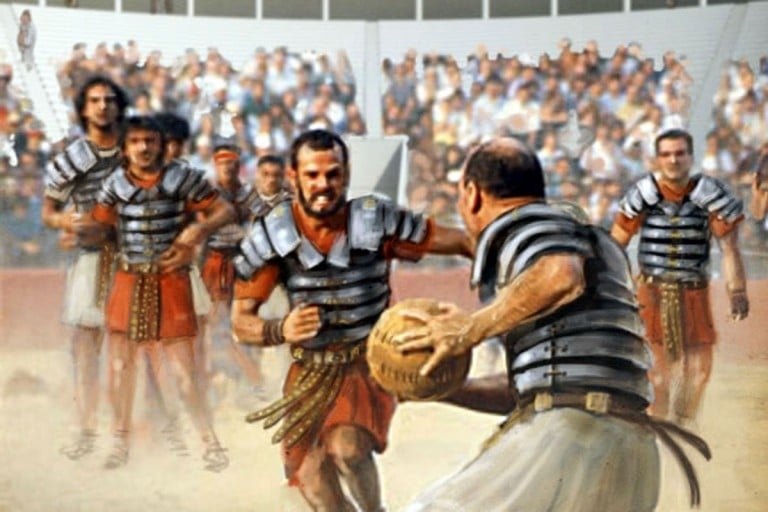
Despite the Roman expansion, harpastum eventually disappeared from the British Isles, and it is highly unlikely that this game could have contributed to the development of English "mob football." However, Roman harpastum was the direct precursor to European football.
In Egypt, archaeologists have also discovered numerous balls of various kinds. Some were wooden, some leather, and stuffed with papyrus. The found balls are generally smaller than harpastum balls and resemble gymnastics balls more.
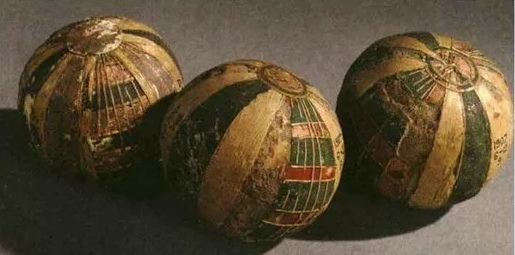 Egyptian Balls, 125 AD, National British Museum, London
Egyptian Balls, 125 AD, National British Museum, London
The oldest discovered ball, most similar to a football, is a ball made from a urinary bladder, no longer belonging to the ancient period. The ball is dated between 1540-1570 and was found in the bedroom of Mary I, Queen of Scotland.
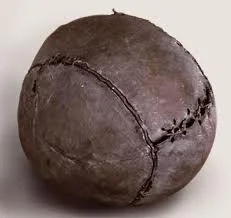 Ball from Scotland, 1540-1570
Ball from Scotland, 1540-1570
Variation of rules from Legio X Fretensis
We recommend playing without armor to reduce injuries. The ball is played by tossing it up from the center of the field. According to the rules that have reached us, you cannot block a person without the ball through direct contact, but you can attack a player with the ball. Passing the ball to teammates is allowed. A goal is scored if a member of your team places the ball on the ground (not thrown!) in the opponent's scoring area. If a player is knocked down and drops the ball in the scoring area, there is no score, and the ball goes to the opponent. Passing into the scoring area is allowed, but if the ball simply falls to the ground, it is also not considered a goal and does not earn points; instead, the ball goes to the opponent. If players pile up and do not disperse within 30 seconds, the ball is played again.
